This site contains affiliate links. Please see Policies for more information.
Here at My Crazy Good Life, we love using the Instant Pot when cooking our healthy recipes. The Instant Pot is a safer and more updated version of the classic pressure cooker.
Pressure cooking has been around for a long time, I remember watching my older relatives stand at the stovetop using the classic pressure cooker.
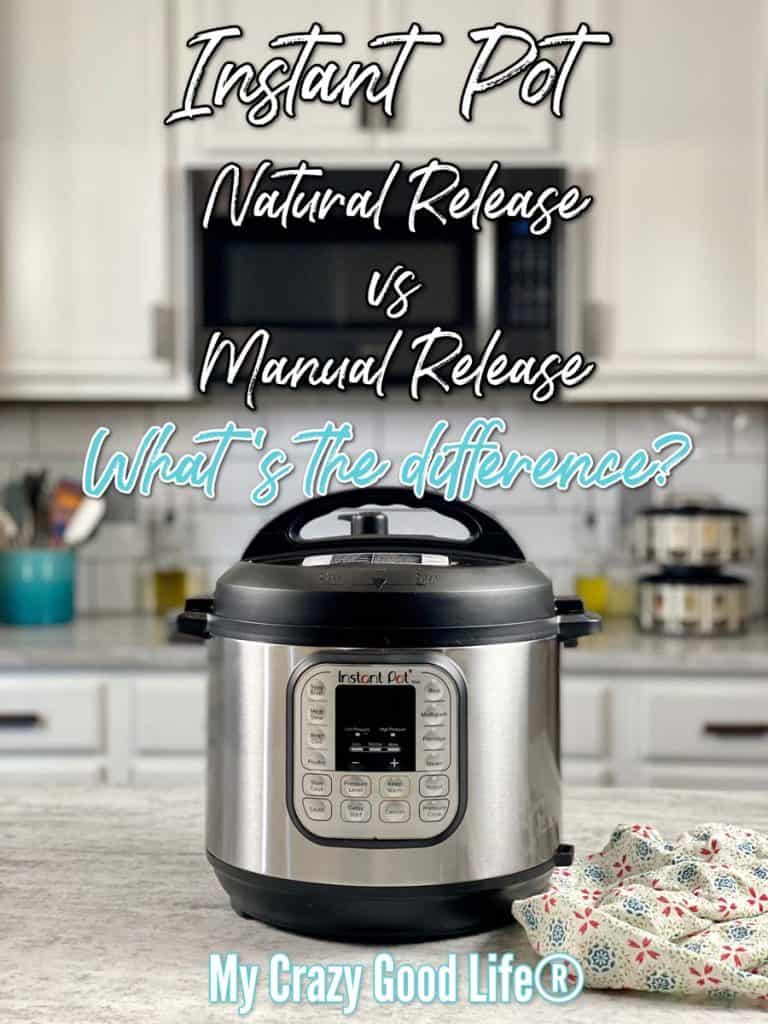
There’s a reason why the pressure cooker is still being used today. Using an electric pressure cooker helps the cooking process go faster, by increasing the amount of pressure and raising the temperature to allow the cooking time to be lower.
With so many different Instant Pot models and Instant Pot recipes out there, it’s important to know the basic uses and guidelines of both the natural pressure release and quick release method.
One of the most common requests I receive from my readers is asking for help on how to handle the pressure release valve, and when to know which method is the best to use. We have all the helpful information you need to know about the natural release vs quick release features of the Instant Pot.
Releasing Pressure
The pressure cooker builds up a lot of pressure inside the pot. Today, the Instant Pot is built with safety in mind. The Instant Pot has two distinct functions to help safely release the pressure that has built up inside the inner pot.
Before the Instant Pot lid can be opened, the pressure has to release safely. Depending on the type of recipe you are cooking, there is a better method in how to release the pressure valve.
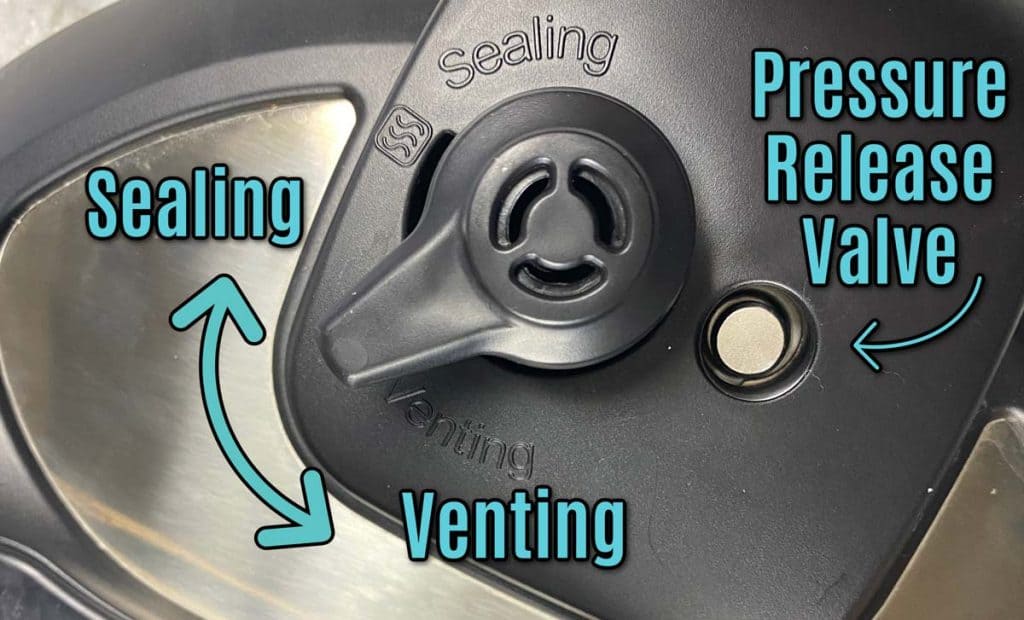
Natural Release Process
Natural Pressure Release is when you allow the pot to sit without moving the sealing position. This allows the pressure to be released slowly and naturally. This method takes longer, but is beneficial for most meat to retain its texture without drying out. It’s also helpful for rice and grains to “unstick” from the bottom of the pot.
Another perk of the natural release mechanism is that it allows the recipe to have a few extra minutes of cook time.
How to do a Natural Release Process
To do the natural release process, you simply let the Instant Pot sit as it is once the cooking cycle is finished. Turn off the Instant Pot, including the heating element found in the “keep warm” setting, and allow it to complete the natural release method. (I like to unplug the Instant Pot at this point so I don’t forget to unplug it later).
Leave the steam release valve in the sealing position – you don’t have to touch the Sealing Valve at all for this. As time continues, the pressure will slowly decrease.
You can tell when the natural release process is complete when the floating valve drops. This means that all remaining pressure is gone and it is now safe to open the Instant Pot. The floating valve is the circular metal disc on the top of the lid that pops up when the Instant Pot comes to pressure, and drops down when the pressure is released.
Tips and Common Uses
- Natural release times will vary based on what is inside the Instant Pot. Expect anywhere from 10-30 minutes of natural release time before you see the float valve drop. These times are dependent on the amount of liquid of density of the food you are cooking.
- A lot of liquid in the recipe will have a higher steam pressure. This will take longer as the pressure decreases.
- We recommend using the natural release method for recipes with a longer cooking time, or those with a large liquid volume. (Think soups, chilis, oatmeals, stews, etc). Most recipes will tell you whether to use the natural release or quick release method.
- The natural release prevents hot steam and foamy foods from coming up through the venting knob. Too much pressure and liquid can cause a mess.
- Sometimes that float valve gets stuck and you may think the pot is still releasing when it’s not. If after 15 minutes or so your valve hasn’t dropped, you can wiggle the lid gently to see if it drops.
Quick Pressure Release Method
The second type of pressure release in the Instant Pot is the quick release method. Many recipes work best when using the quick pressure release method. This method is perfect when you want the cooking time to be lower, or when you don’t want to overcook vegetables, pasta, delicate foods, or meats that can get tough if overcooked.
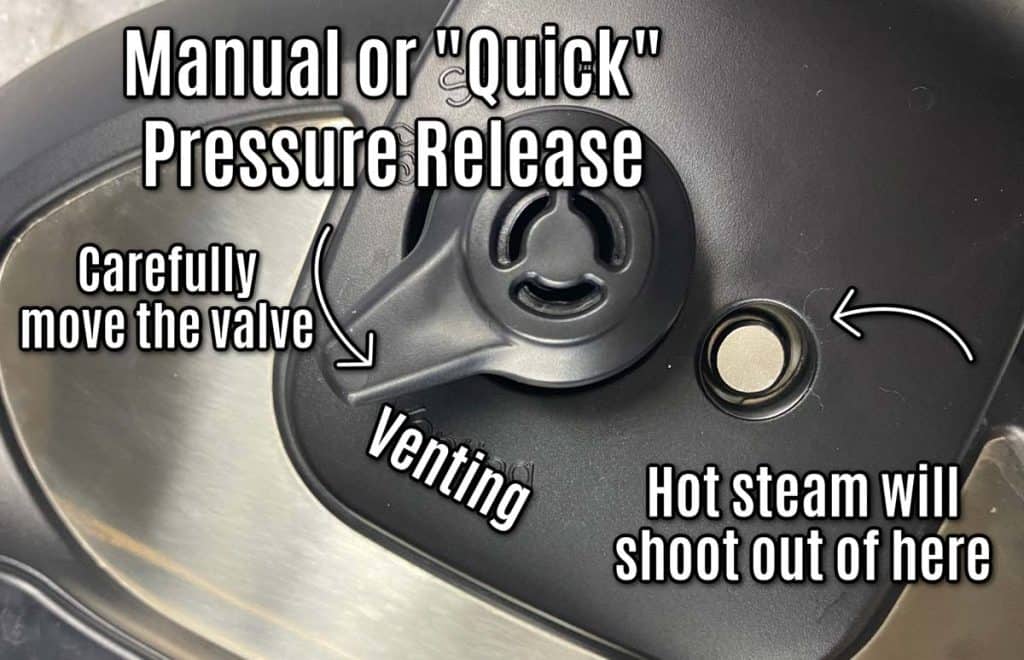
How to do the Quick Pressure Release Process
To do the Quick Pressure Release, turn off (and unplug) the Instant Pot. Wearing on an oven mitt, and holding a long wooden spoon, kitchen tongs, or spatula, flip the quick release valve to the venting position. Some Instant Pot models will have a steam release button that will start the quick release function.
WARNING: Hot pressurized steam will quickly release out of the venting valve. You never want to do this without protection on your hand. If this is your first time using a quick release, be prepared for a lot of steam to rise out of steam valve as it releases the rest of the pressure.
Tips and Common Uses
- We recommend using the quick release method when cooking vegetables, pasta, or other delicate foods. We want to stop the cooking of these types of foods so they don’t overcook. Most recipes will share what type of release is best for what recipe you are cooking.
- The quick release takes much less time than the natural release. The quick release can quickly lower pressure and stop the cooking.
- Do not set your Instant Pot under the kitchen cabinets. The Instant Pot is best used with plenty of space above. The steam and humidity coming out of the Instant Pot can cause damage to your wooden cabinets.
- Remember to have your hands protected. This is high pressure cooking, there is a lot of very hot steam that escapes on the top of the Instant Pot quickly.
Pressure Release Methods
Cooking with the Instant Pot is a breeze. We love it because you can always count on a delicious meal with fewer dishes to wash up afterwards. Our recipes are written with the best release method to use, but that isn’t always the case with other online recipes.
Hopefully after reading our blog article, you are confident and prepared in knowing natural release vs quick release, and understanding the best way to release the pressure with all of your Instant Pot recipes!
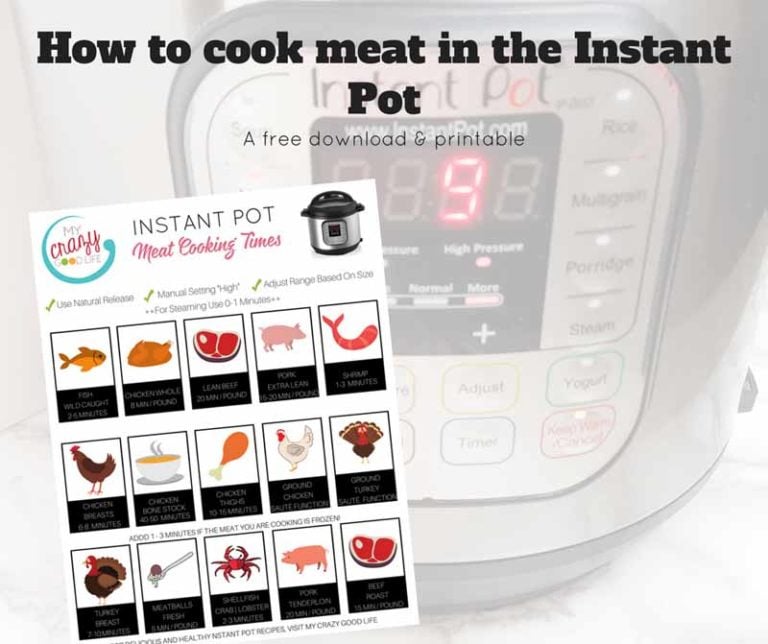
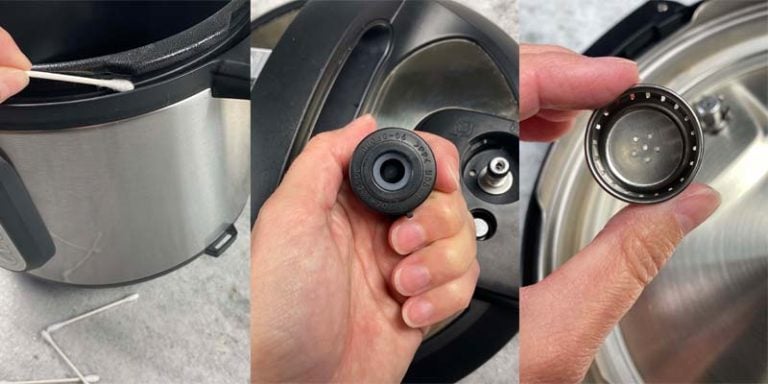
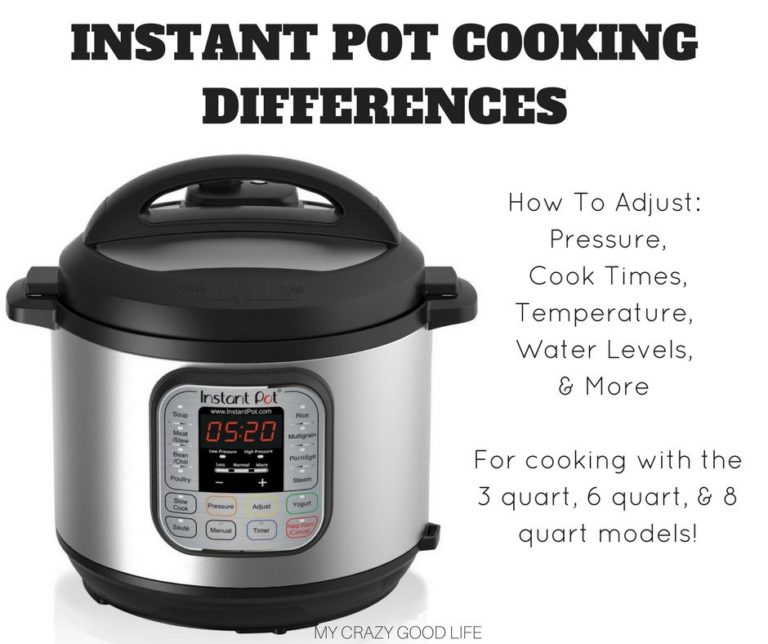
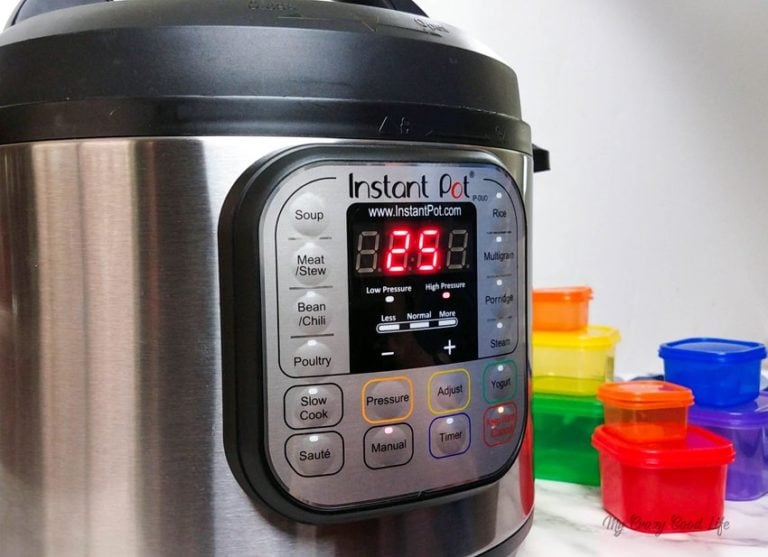











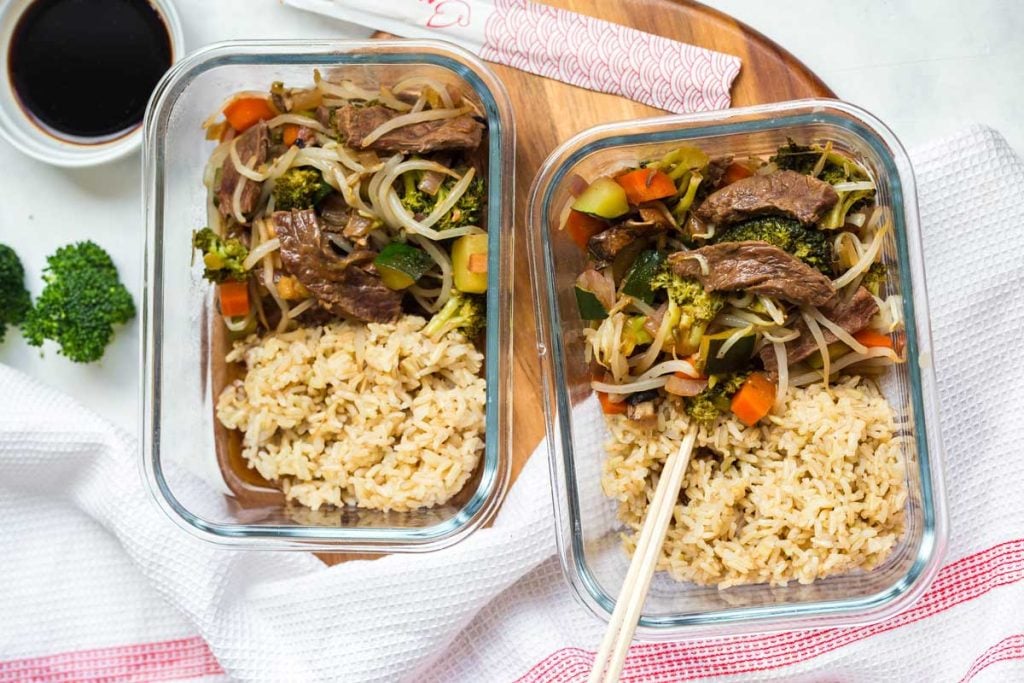




















Did you love this recipe?
Make sure to comment below so we can chat about it!